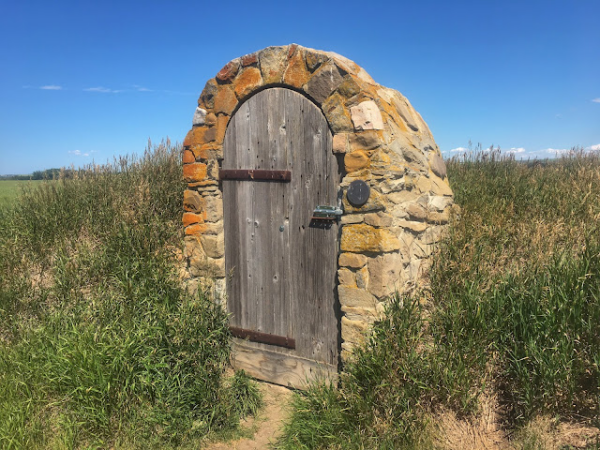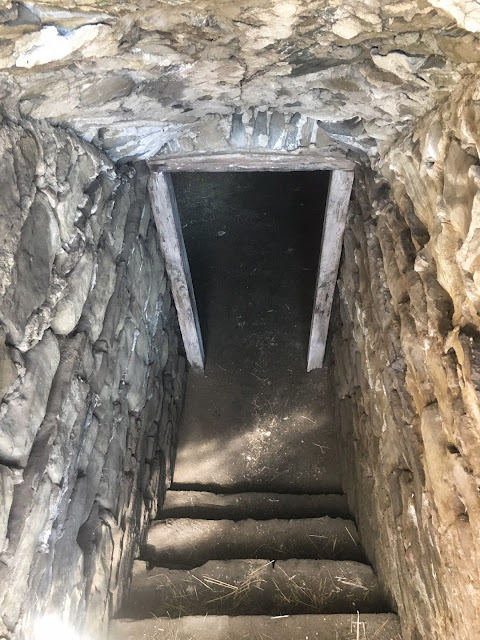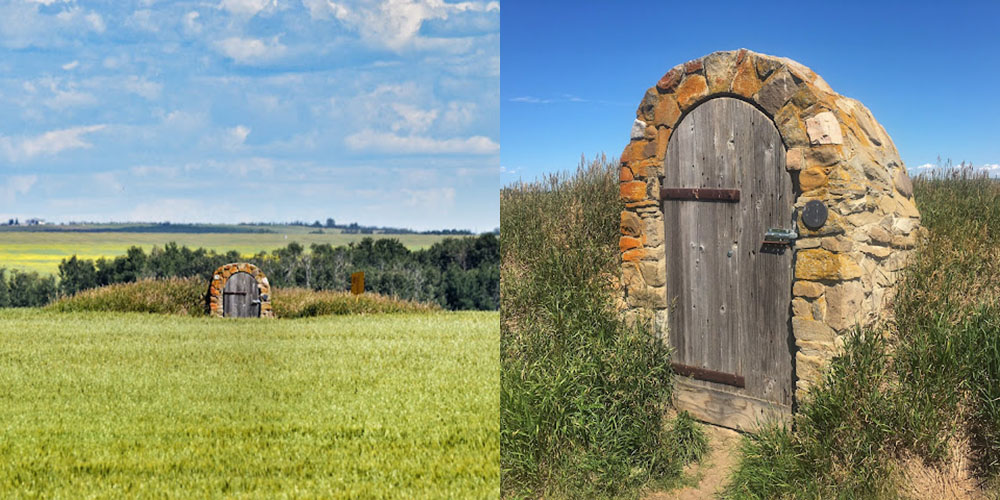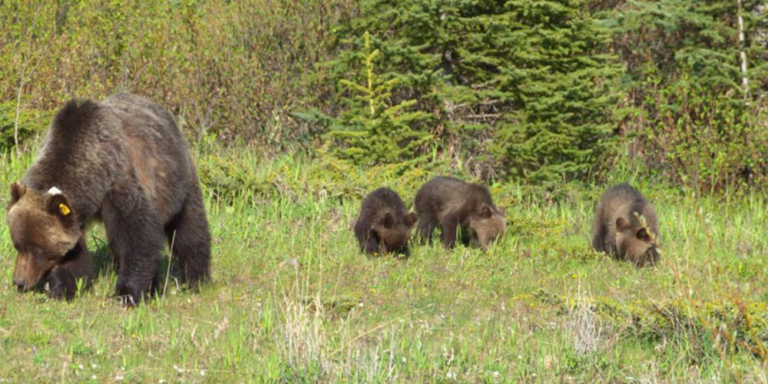Suppose you’re wandering through an open, windy farmers’ field in Kneehill County. You may stumble across an old, withered, freestanding door out on the prairie in that case.

It looks like it must lead to another world, and it does.
Open the old wooden door, and you’ll find yourself surrounded by stone, carefully walking down rugged stairs leading straight into the damp earth.
Reach the bottom, and you’ll find a small room that holds secret tales of the lives of Alberta’s earliest settlers.
The shelter exists much as it did 100 years ago. Hidden beneath a grassy mound, the only thing that’s really changed is the once-fresh white limestone painted on the walls.
Small temporary shelters weren’t a unique concept for settlers of the time.
Truly in line with the “get-er-done” spirit we still pride ourselves on in Alberta, many would build “sod shelters.”
These simple, dugout houses were essentially shallow pits with roofs made from mud plaster, poles, and sod.


Entire families would be housed in these small, rickety rooms until a more permanent structure could be built. At that point, the sod house would be converted into a root cellar for supplies, fruit and vegetables.
However, very few were constructed in our province, but one example is the Sunnyslope Sandstone Shelter.
The stonework made of sandstone was rare for our region, leading to much speculation about Sunnyslope’s true origins.
So why sandstone? The most common explanation is that Sunnyslope’s builder had been taught construction techniques used by homesteaders on the Great Plains of the United States.
The first records for the land were to Erich Steendahl, who made an entry for the quarter of land on Aug. 22, 1902.
The evidence that he was the first to build Sunnyslope comes from records of neighbours in the area who recalled seeing Steendahl hauling sandstones from the nearby lake.
A local blacksmith, Mr. Coventry of Olds, would later state that Steendahl had come to him asking Coventry to make him hinges for a door.
All evidence that seems like good odds Steendahl was the original craftsman, but other historians disagree.
George Schech, who was the next to take up residence at the property, was a traditional stonemason by trade, so the plot thickened.


The Memoirs of Sunnyslope Pioneers also states that the shelter was Schech’s handiwork.
Thus, many believe Schech built the shelter rather than Steendahl.
The mystery of “who did it” only makes the site more intriguing. Ultimately, what is known is that it was constructed between 1900 and 1905, likely by homesteaders moving north from the American Midwest, where such dug-out stone structures were far more common.
Whoever lived in it likely had a hell of a time braving freezing cold winters. We can only imagine just how good opening that old door would be in the summer to have warm sunlight hit your face!
Sunnyslope allows us to connect with the challenges and triumphs of the pioneers who shaped our province’s history, from the tiny light and ventilation opening to the large stone slabs that form its staircase.
It’s a small highlight of Alberta’s heritage, and it shows how much intrigue surrounds even the simplest structures if you really investigate them.
While we may not have found the ultimate truth behind this piece of history, we invite all our history sleuth readers to help us put together the accurate tale behind this small part of our past.
If you’re down for a road trip, it’s worth visiting, or you can check it out virtually through the video below!






